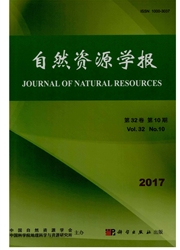

 中文摘要:
中文摘要:
能源是社会经济发展最基本的驱动力,是人类赖以生存的基础。随着经济的快速发展,能源约束现象逐渐突出,能源效率偏低是目前的突出问题。论文应用Laspeyres因素分解法,对粤湘黔三省的能源使用强度进行分解分析。研究发现:①三省的能源使用强度差异较大,尤其是广东与贵州能源使用强度相差很大,从发展趋势看,三省的能源使用强度差异会逐渐变小。②三个省份的第一产业结构份额和效率份额都有利于减小能源使用强度,第二产业结构份额均有助于增加能源使用强度,第二产业效率份额都有利于降低能源使用强度,第二产业效率份额在三次产业中作用最大。广东省的第三产业结构份额为负值,而湖南、贵州结构份额多为正值;第三产业效率份额广东、湖南分时段出现正负值,原因有待于探索。贵州第三产业效率份额为负值。③三省的结构份额对能源使用强度都产生负作用;三省的效率份额都有利于降低能源使用强度,具体作用因地区而异。据此论文认为在近期要完成单位GDP能耗降低20%,减少国家能源消耗总量,保证能源安全,经济欠发达或能源使用强度高的地区应是重点整治对象。
 英文摘要:
英文摘要:
Energy is the most basic driving force for socio-economic development,and the basis for human survival.With the rapid economic development,energy scarcity has gradually been appeared.Moreover,low energy efficiency is the prominent problem in China.In this paper,the energy intensity of Guangdong,Hunan and Guizhou were analyzed based on Laspeyres decomposition method.We found that: 1)The difference of energy intensity are large obviously among the three provinces,particularly in Guangdong and Guizhou.Nevertheless,the differences of energy intensity will gradually become smaller among the three provinces in the future.2)The structure share and efficiency share of primary industry are beneficial to reduce energy intensity.The structure share of secondary industry can increase the energy intensity,but the efficiency share of secondary industry can reduce energy intensity.Moreover,the efficiency share of secondary industry plays an strongly import role in reducing energy intensity.The structure share in Guangdong Province is negative.But they are positive in Hunan and Guizhou.The efficiency share of tertiary industry of Guangdong and Hunan is negative or positive during different periods.The reasons need further study.Whereas,the efficiency share of the tertiary industry is negative in Guizhou.3) The structure share in three provinces is negative to energy intensity.The efficiency share of the three provinces can reduce energy intensity,the roles vary from region to region.In this paper,we suggest the great effort should focus on economic underdevelopment or high energy intensity areas in order to reduce energy consumption by 20% of unit of GDP in the near future and guarantee energy security.
 同期刊论文项目
同期刊论文项目
 同项目期刊论文
同项目期刊论文
 期刊信息
期刊信息
